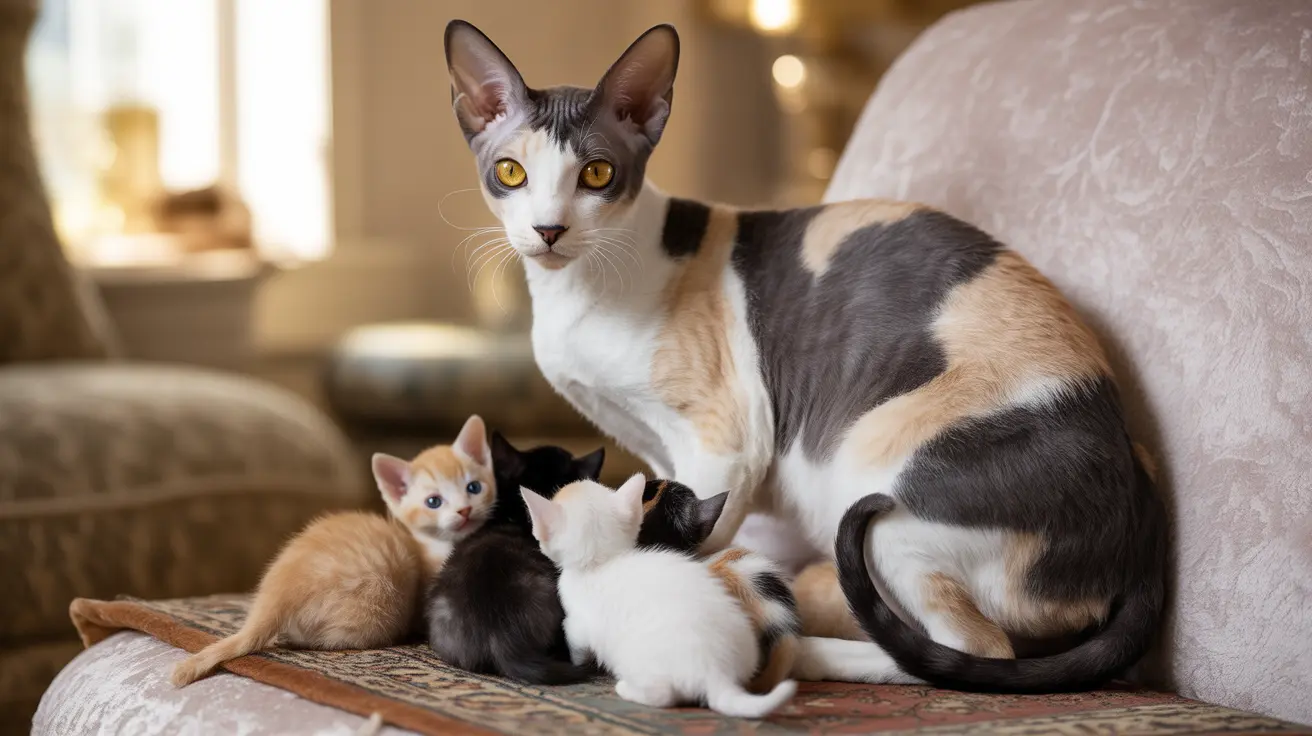If you've ever noticed remarkably different-looking kittens in the same litter, you might have wondered about their parentage. The fascinating answer is yes - cats can indeed have multiple fathers for a single litter of kittens, thanks to a biological phenomenon called superfecundation.
This unique reproductive capability allows female cats (queens) to produce kittens that have different fathers within the same pregnancy, leading to diverse physical characteristics and genetic traits among littermates. Let's explore this remarkable aspect of feline reproduction and understand how it impacts cat populations.
How Superfecundation Works in Cats
Superfecundation occurs when a female cat mates with multiple male cats during her heat cycle, which typically lasts about a week. During this time, the queen releases multiple eggs, and each egg can be fertilized by sperm from different male cats. This process results in siblings that are technically half-brothers and half-sisters, sharing the same mother but having different fathers.
What makes this even more interesting is that cats are induced ovulators, meaning the act of mating triggers egg release. This biological feature increases the likelihood of multiple-father pregnancies, as each mating potentially releases new eggs for fertilization.
Urban vs. Rural Superfecundation Rates
Research has shown striking differences in multiple-paternity rates between urban and rural cat populations. In urban areas, where cat populations are denser, up to 83% of litters may have multiple fathers. This rate drops significantly in rural areas, where only 0-22% of litters show evidence of multiple paternity.
This dramatic difference is primarily due to the higher concentration of cats in urban environments, providing more opportunities for females to encounter and mate with multiple males during their heat cycle.
Physical Evidence of Multiple Fathers
The most visible sign of multiple fathers often appears in the physical characteristics of the kittens:
- Varied coat colors and patterns
- Different fur lengths and textures
- Distinct body sizes and shapes
- Diverse facial features
However, it's important to note that genetic variation can also occur in single-father litters due to the complex nature of feline genetics. The only definitive way to confirm multiple fathers is through DNA testing.
Impact on Feline Population Dynamics
Superfecundation plays a significant role in maintaining genetic diversity within cat populations. This natural mechanism helps ensure the survival of the species by:
- Increasing genetic variability within litters
- Enhancing adaptive potential in cat populations
- Contributing to the overall resilience of feline communities
Frequently Asked Questions
Can a single litter of kittens have more than one father and how does superfecundation work in cats?
Yes, a single litter can have multiple fathers through superfecundation. This occurs when a female cat mates with several males during her heat cycle, and different eggs are fertilized by sperm from different fathers.
Why do kittens within the same litter sometimes have different coat colors and patterns?
Differences in appearance can result from multiple fathers or normal genetic variation. Each kitten inherits a unique combination of genes from their parent(s), leading to diverse physical characteristics even within the same litter.
How common is superfecundation in domestic cats, especially in urban versus rural environments?
Superfecundation is significantly more common in urban areas (70-83% of litters) compared to rural areas (0-22% of litters) due to higher cat population density in cities.
How can cat owners or breeders control or prevent multiple fathers in a cat litter?
The most effective way to prevent multiple-father litters is through spaying female cats or keeping them strictly indoors during heat cycles. For breeders, controlled breeding environments ensure known paternity.
Does having kittens with multiple fathers affect the health or genetic diversity of the litter?
Multiple fathers typically increase genetic diversity within a litter, which can potentially enhance the overall health and adaptability of the kittens. However, the health of individual kittens depends more on proper prenatal care and nutrition than paternity.
Understanding feline superfecundation helps cat owners and caretakers better manage their pets' reproductive health and contributes to more effective population control strategies in both domestic and feral cat communities.






